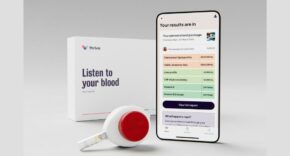
By Chris Heavey, Senior European Market Manager for GHX
As we approach the winter flu season, the added pressure of the rising numbers of COVID-19 cases poses a challenge for global healthcare supply chains. Healthcare suppliers and providers need to minimise the risk of repeating the PPE shortages at the beginning of the pandemic. To do this, many are turning to data, automation and AI to ensure they are adequately prepared for any spikes in demand. The question is, where can data science best be applied in the fight against COVID-19, and how critical could it be in tackling both the current rise in cases, and future pandemics?
The importance of data
First, a quick guide to how data can help to enable smarter and more resilient supply chains in healthcare. One of the most underestimated areas of AI (in many ways the attractive, public face of Big Data) is its ability to analyse large amounts of information to identify patterns and hidden correlations. AI uses that data and analysis to optimise and automate processes to a degree simply not possible by humans.
This sophisticated optimisation is only possible with the right data structures and access to high quality data. Or, as the saying in the information industry goes, we risk the phenomenon of GIGA which stands for “garbage in, garbage out”. Before beginning any kind of AI or automation driven initiative, organisations have to make sure they have both enough data from different sources, and that the data adheres to good standards, policies and processes.
Good quality data is key
An optimised supply chain must first start with collecting good quality data. With the increased automation of the supply chain and the digital availability of usage records, this high-quality data is now available and opens the door to some fascinating AI-driven applications.
One of the most exciting areas of AI is its ability to analyse a range of patient clinical, social and behavioural data to predict future diseases, areas of high healthcare demand and the likelihood of different geographic or demographic areas to be affected by a particular medical condition. On an individual patient level this kind of information can help doctors to quickly diagnose conditions based on the “most likely” cause of symptoms. But imagine what this data can, and does, do on a wider scale. Information on areas more susceptible to, for example, higher numbers of COVID-19 cases based on a combination of real-time data and existing information on the makeup of populations. Is an area densely populated with an older average age? AI could factor these kinds of questions in when deciding how many resources to stockpile in a specific location, predicting the kinds of volumes required and relaying this right up the supply chain, from distributors to manufacturers.
Automating the healthcare supply chain
A system that can accurately predict where numbers are more likely to rise is valuable. But what makes a data driven healthcare supply chain invaluable to the fight against COVID-19 is the automated processes which allow healthcare providers to properly prepare based on those insights. Recording data on stock level within a healthcare venue such as a hospital or care home can give good visibility on how long is left before new equipment will be purchased.
Picture a hospital experiencing a rising number of COVID-19 cases, though. Clinical staff simply don’t have the time to carry out inventory stock checks at regular intervals when dealing with 100% bed occupancy. This is where automation can really improve the response to COVID-19. By automatically tracking when a piece of medical equipment is used, from PPE through to a ventilator, monitoring stock levels in real-time is possible. Purchase orders can then be automated for new stock when it falls below a certain threshold. This allows for an inventory management and procurement chain that is able to function at an optimised level without the need for clinical staff to divert their time away from frontline patient care.
For NHS Scotland, which moved toward a digitised inventory management and procurement system a few years ago, the result was Health Care Support Workers saving between 8 and 13 hours a week on purchase order creation, allowing them to focus on clinical activities. Data on purchase order frequency can also then be used to predict how much stock will be required in the future, and help manufacturers prepare and scale-up accordingly.
The ability to gain real-time insight into stock levels, assess the likelihood of an increase in the need for medical supplies due to a wave of illness and then pre-emptively order the required supplies, all without diverting clinical staff away from frontline care, is a game changer. Our ability to battle COVID-19, from a healthcare provider perspective, depends on our ability to avoid both medical equipment shortages and frontline staff absence. A smart supply chain, enabled by good data, can help the healthcare sector step up to the challenge.












